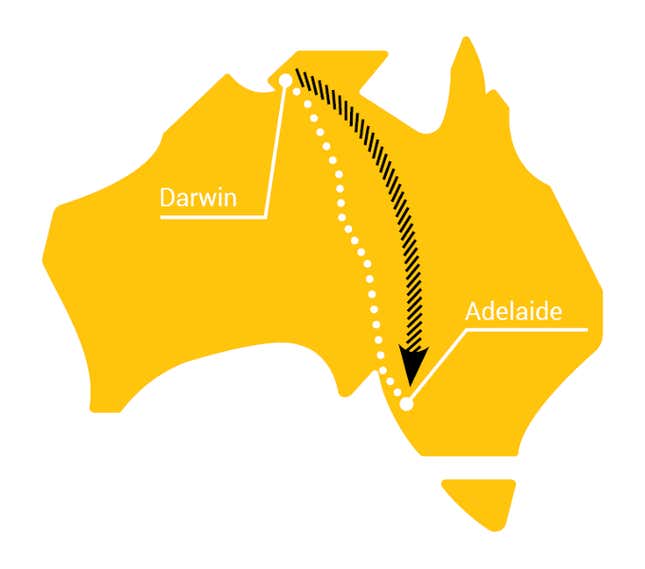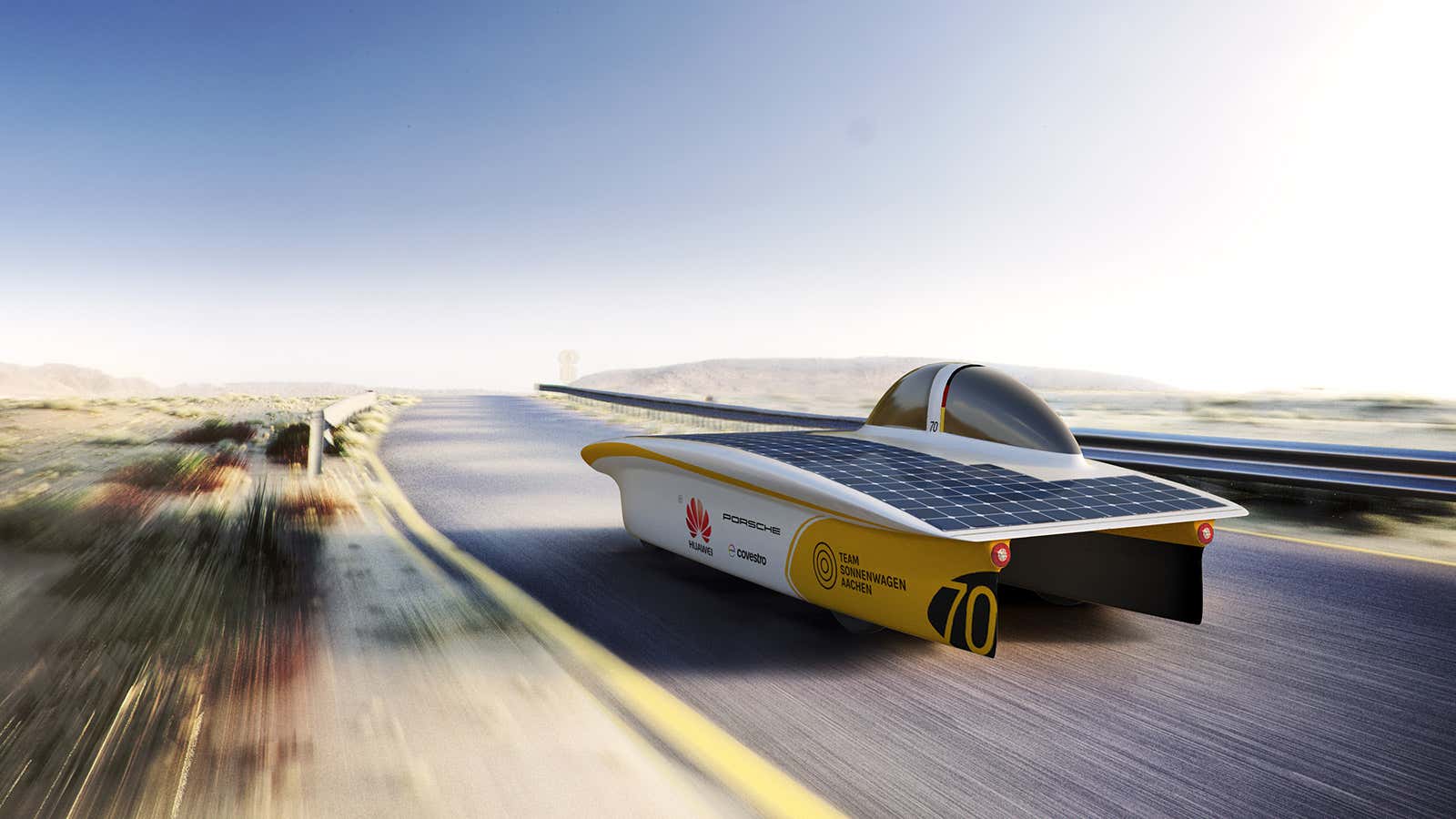On 15 July 2017 Team Sonnenwagen Aachen unveiled their hand-built solar car to spectators in the Porsche Fan Zone at the 6 Hours of Nürburgring, one of the the highlights of the FIA World Endurance Championship. A fitting public debut, as the team are the only German entry competing in the Challenger class at this year’s Bridgestone World Solar Challenge–a 3000km race across the Australian outback in some of the harshest conditions on the planet. Their journey to this point has been anything but ordinary.
What started as a theoretical idea in the summer of 2015 between three twenty-something students in the German town of Aachen, quickly spiralled into a full scale engineering project. Rallying their classmates and friends with various areas of expertise, three quickly became 40 and Team Sonnenwagen Aachen was born.
Unlike many of the other teams in the race, which is largely made up of students, the team had no experience of building a solar powered car. Nor did they take time out from their studies, designing and building much of the car in their spare time, fitting in meetings around classes and part time jobs, fuelled by their pioneering spirit.
This wasn’t always easy, explains team chairman Hendrik Löbberding, a 26-year-old Mechanical Engineering masters student at RWTH Aachen University. “For the first year or so, during the concepting and design phase, it wasn’t difficult balancing studies and the project. But when we started to build the car, lots of people needed lots of information, and companies don’t work during the evenings. We constantly had to interrupt classes with calls and emails to ensure things were running smoothly.”
In a little under two years the fiercely entrepreneurial and motivated team went from plans to a working vehicle: “We had a good concept relatively early on, but in the summer of 2016 when the race regulations came out, we had to make some amends and that took more time than expected.” In fact, they had to reduce the size of the car, cutting the solar panel area by a third.
Funding the build was an important step, and Porsche were happy to help the team.
“As a company, we want to shape the future of the sports car.” says Robert Ader, director of marketing communications at Porsche. “This requires young entrepreneurs like the team from Aachen who are not afraid to go to uncharted territories. When we heard about the project, the decision to support almost felt natural to us.”
Of the many challenges they faced along the way, carbon fibre proved to be one of the largest due to the complexity of using it. Not to be defeated, they found help in an unlikely place, enlisting the help of a student glider team with a wealth of experience and process knowledge. This is just one of the many ways the Sonnenwagen has more in common with a plane than a car. From the aircraft aluminum, custom designed suspension, and wiring, developments the team pioneered may well find themselves into consumer cars in the next decade.
One of the first sports car manufacturers to embrace alternative fuel technologies, Porsche have spent millions developing electric and hybrid-electric vehicles. According to Andreas Haffner, Member of the Executive Board for Human Resources and Social Affairs at Porsche, they “want to play an active role in shaping the future of the sports car. To do so, we need exactly this kind of young people, full of courage and pioneering spirit, and who are willing to break the mould. These are values that are also firmly rooted in our company culture.”

The race itself has been running biennially since 1987 along Australia’s backbone, the Stuart Highway, from Darwin in the north to Adelaide in the south. Taking up to eight days to complete by solar power alone, 46 teams from across the globe are competing in this year’s challenge.
The rules are strict, governing size, weight and power of the car. Teams can drive for up to eight hours a day, camping in the bush overnight and stopping periodically for driver changes and only the most minor of repairs.
While the sun will be the car’s lifeblood during the race, it’s also one of their biggest problems. To minimise this, the team turned to another unlikely source: their university’s sports department. Home to a large sauna, the team were able to test batteries in extreme conditions and prepare drivers for the extreme heat in the cabin, which they estimate will rise to around 45 degrees celsius.
Luckily the students had access to the a world class motorsport and endurance racing team, which proved invaluable. Team Sonnenwagen Aachen hadn’t paid much thought to driving strategy, until they met with the Porsche LMP team.
“Just like us, the Aachen students will be pushed to the absolute limit when developing their racing car. The key issues surrounding lightweight construction, cooling, efficiency, powerful electric drive and aerodynamics correspond with the requirements of our Le Mans victor, the 919 Hybrid”, explains Porsche LMP Team principal Andreas Seidl.
The 2017 Bridgestone World Solar Challenge takes place between 8-15 October and you can follow Team Sonnenwagen Aachen’s progress on their website.
This article was produced on behalf of Porsche by Quartz Creative and not by the Quartz editorial staff.
